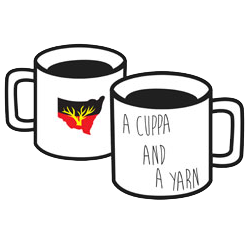31 August, 2014
Land regeneration, disability, homelessness, employment, training, biodiversity. This is not the usual to-do list of a Local Aboriginal Land Council. But at Orange LALC these are the pillars on which they hope to build stronger communities and a sustainable council.
“We have to look at other ways to do business and a different way to promote and support our communities,” said Orange LALC CEO Annette Steel.
“Social welfare, health education, employment, housing, that’s going to build our community and our people.”
The logo of Orange LALC sums up their approach; the platypus, a totem for the area, links three circles representing the community through past, present and future.
Orange is in Wiradjuri country. In the 1970s many Aboriginal families from places like Brewarrina, Bourke and Lightning Ridge moved into the area for education , employment and housing. Census figures put the Aboriginal population of the area at 3,500 but local estimates are closer to 5,000 depending on the season.
Orange LALC has seen huge growth in the organisation in the past five years. It now employs up to 36 people in new programs extending its reach into the Orange community and beyond.
About 20k on the road towards Bathurst at LALC land at Shadforth, Neil Ingram is leading a team of 10 full time workers bringing country back to its natural state through regeneration, revegetation, and traditional fire burning practices.
For three years the program, Gaambuwananha Ngurambang has focused on bringing back country that was over-farmed and overrun with noxious weeds and pests.
Program staff collect and propagate seed which they use for their own regeneration projects or sell. They also work on external regeneration projects having just finished a 5,000 tree plant at nearby Cadia Valley.
“The program helps build strong community and independence through jobs. We know commercial education and training are all important but for any program our cultural values and practices need to be the main point of what we do. Caring for country means we not only make the country more healthy but we make our people healthy as well,” said Neil Ingram.
“Getting out in the bush like this is absolutely wonderful,” says Terry Mc Lean. “In the process of collecting the seeds and planting trees we see a lot of scar trees, we see artifacts lying around so it’s just good to get out and really walk on places no-ones been allowed on till we got the land back.”
Back in town, the finishing touches are being out on an NDIS-linked service, Ability Links which will operate out of the Land Council. It’s a landmark joint working arrangement with Deniliquin LALC, Broken Hill LALCs and Intereach to work with Aboriginal people in community with a disability in reconnecting or connecting to community.
As a part of building community strength the Orange LALC is also furthering their work in homelessness services to the broader community.
At the heart of it all is employment. Annette Steel says, “To me employment is what’s going to build our community. We know what getting a job does for one person, and that flows on to family and community.”
A vehicle for this is Yugaway Motel, a long-term project being developed for LALC land. The motel will provide employment and training in all associated areas of the hospitality industry including at the art gallery, function centre and gardens.
“I’d like to see in 5 years time, one of our kids on the cover of a magazine that have got a job as a result of our work here and gone to Paris or London just because they can, ” says Annette Steel.
At Orange they are thinking big and broad. Neil Ingram says, “When I was young 20-30 yrs ago the land councils were the peak bodies in each community – we got sidetracked but I think we’re coming back now. We need land councils to help develop infrastructure to help take us forward.”

